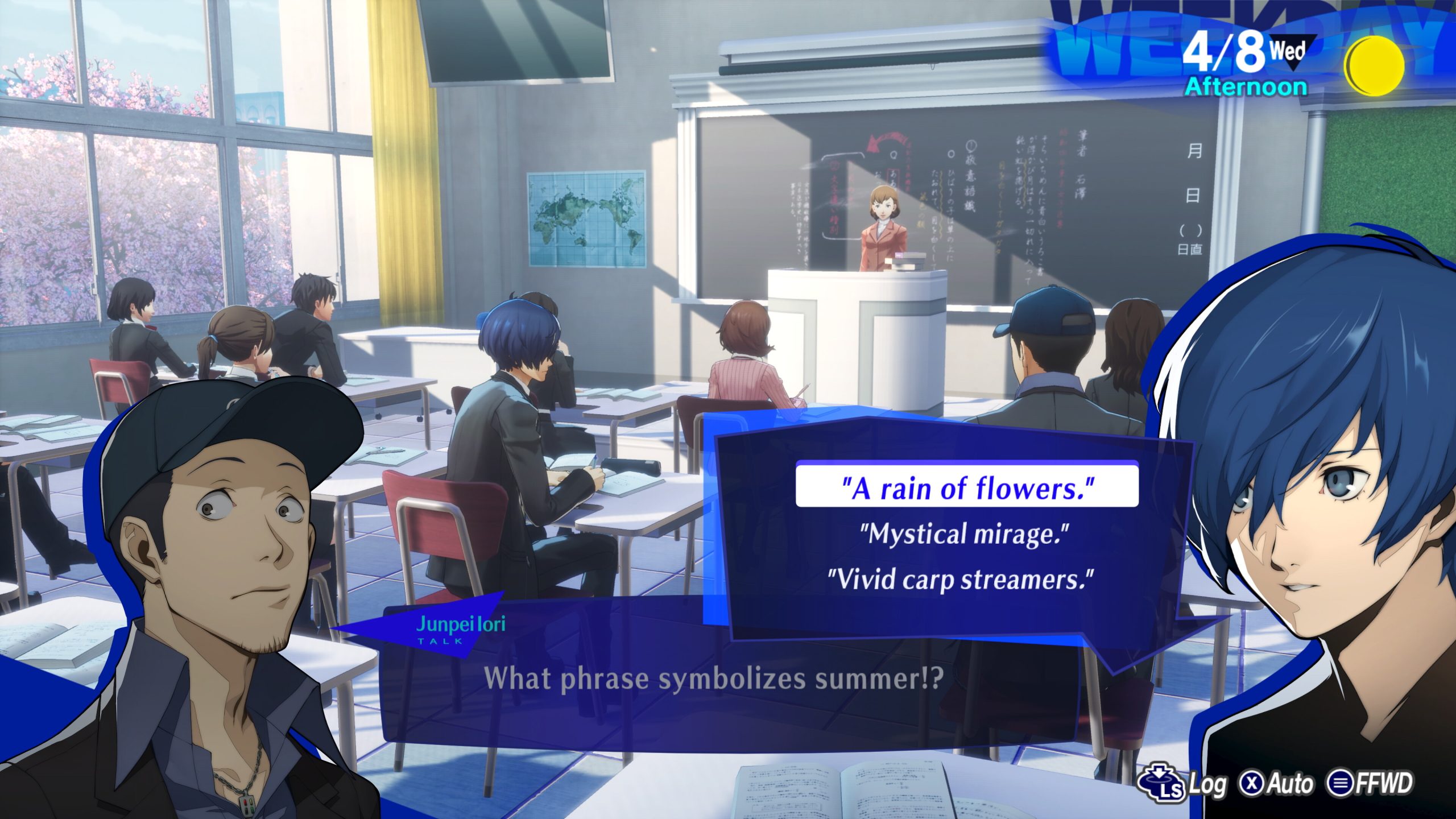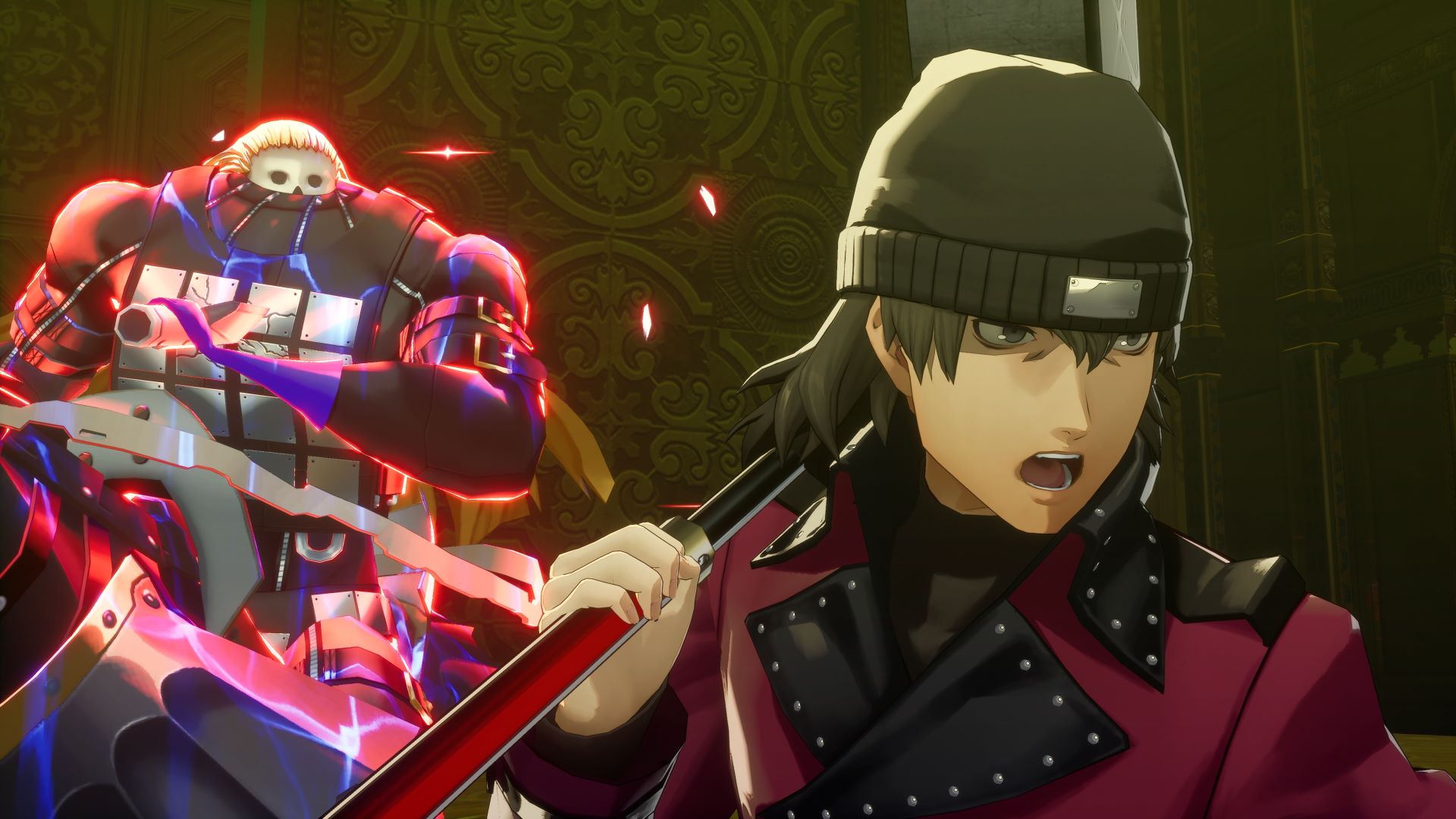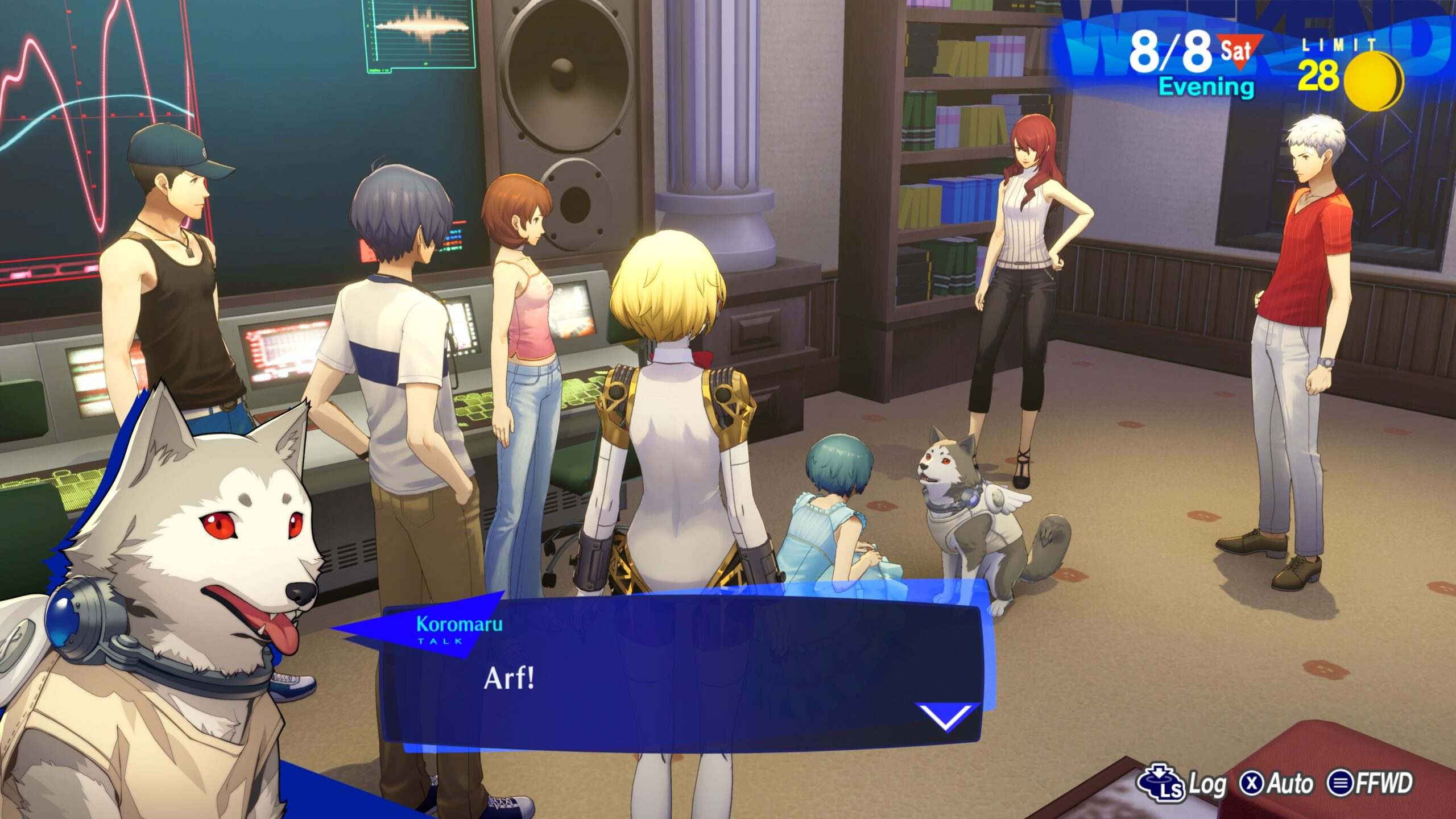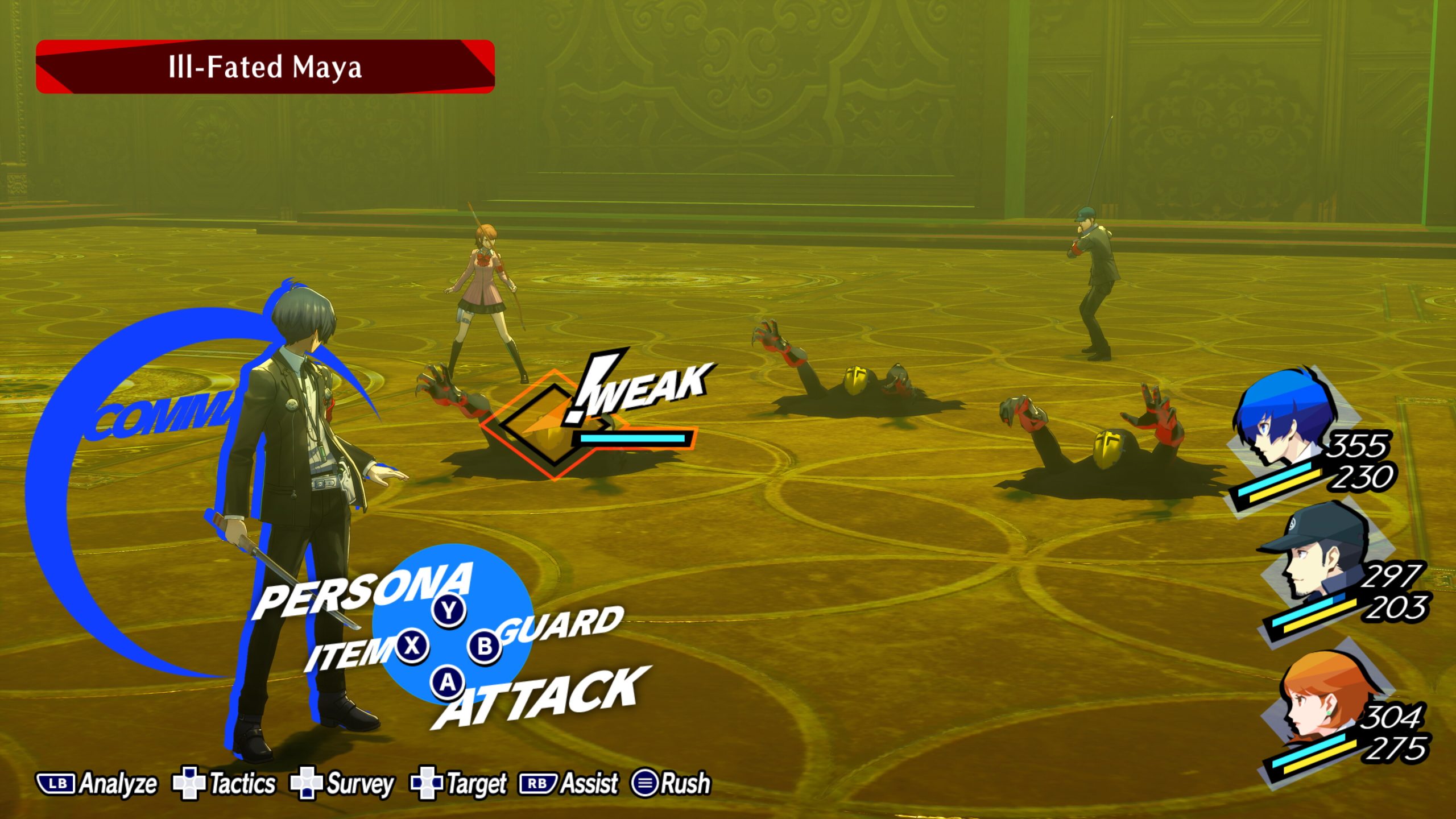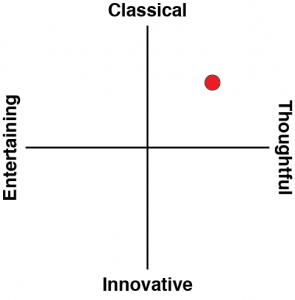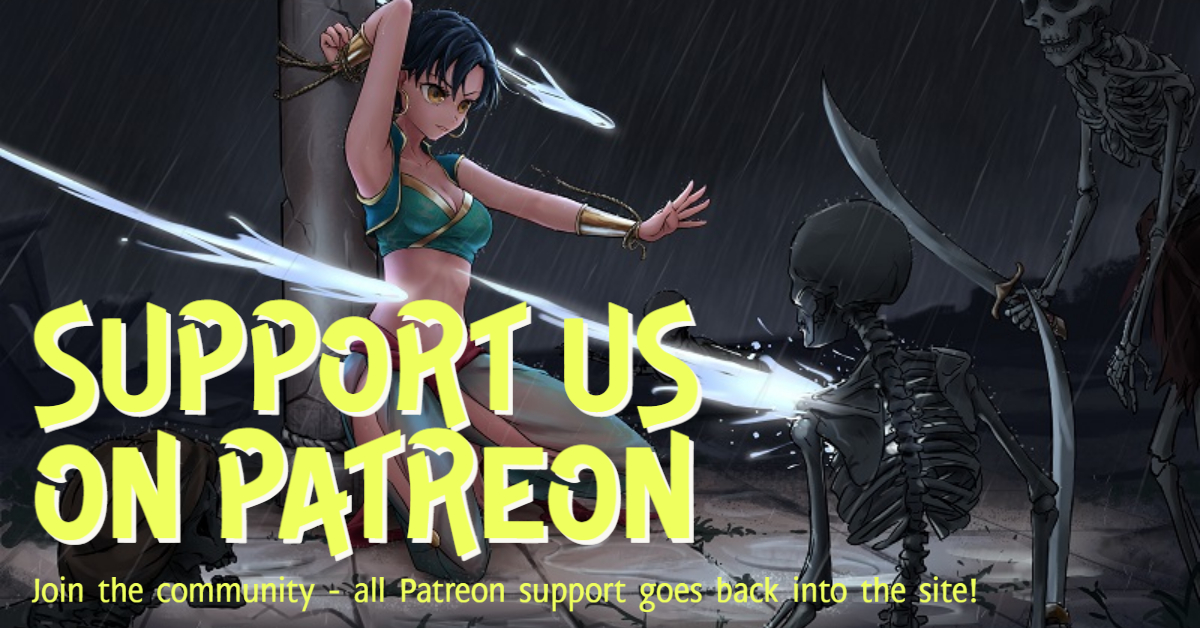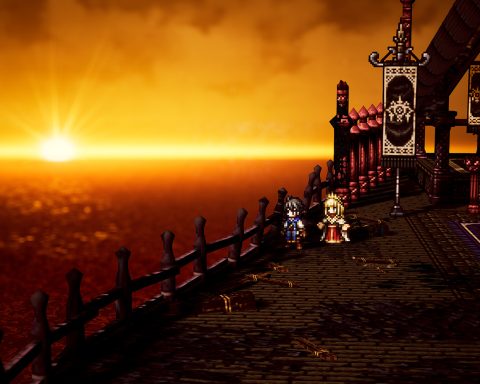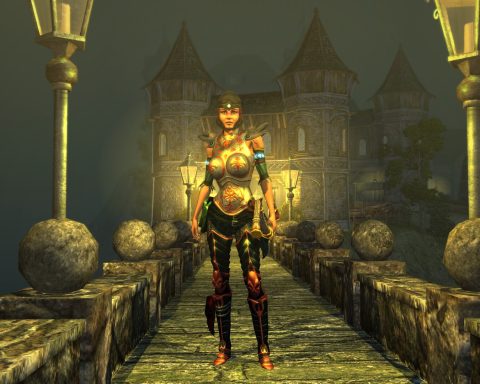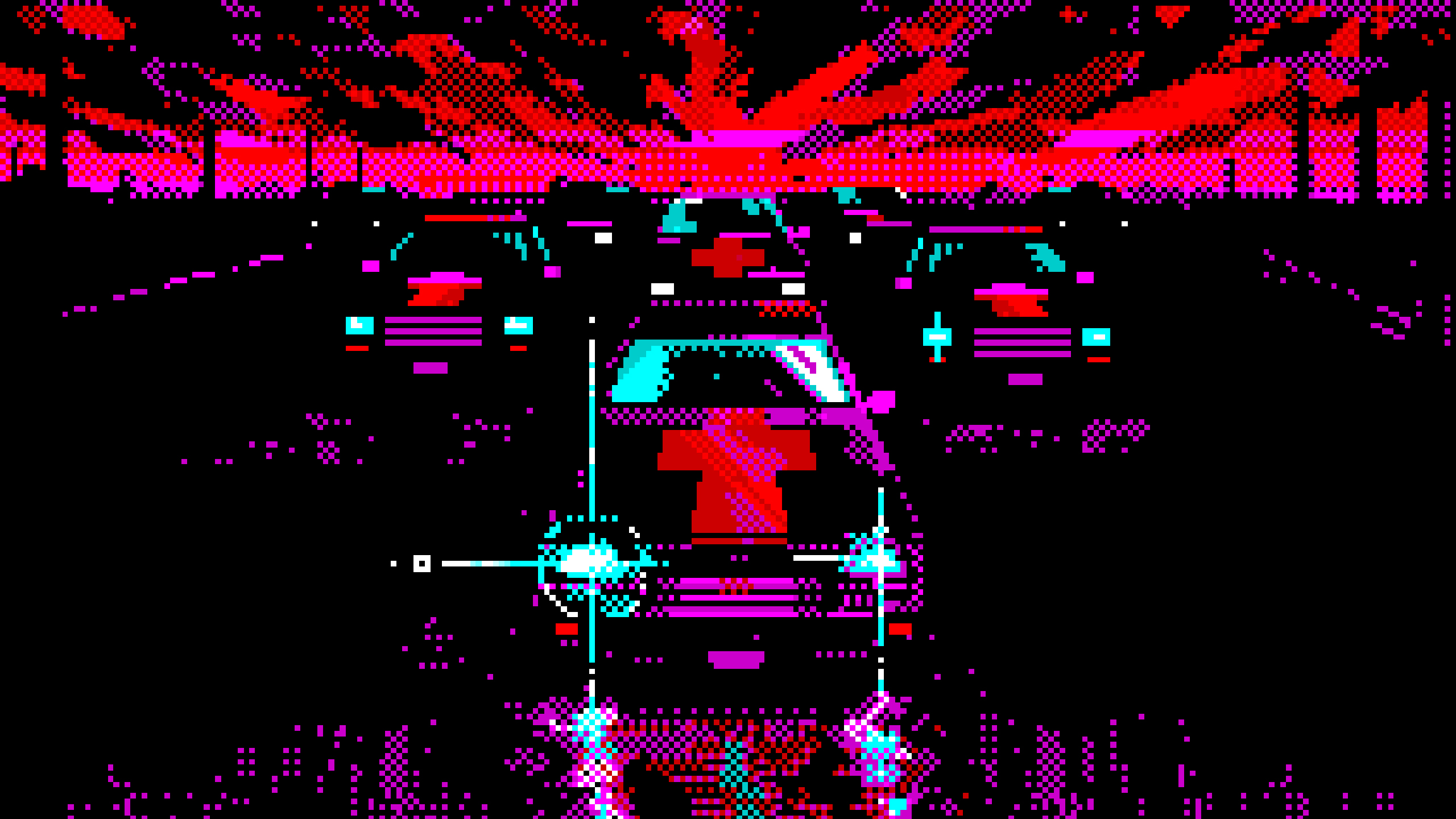Persona 3 occupies an interesting role within the broader Persona series. Unlike Personas 4 and 5, there is less of an emphasis on the “J-Pop” bubbly quality that significantly lightened the mood of those two titles (however serious the underlying message of each was). Unlike Persona 1 and 2, Persona 3 is structured more like its later peers. This game is about finding your identity and coming to terms with your inner core… and it represents the coming-of-age moment for Persona itself when the series found the identity that would come to represent it and turn it into one of the biggest JRPG properties. How meta is that?! And now Atlus and SEGA have decided to remake Persona 3 with Persona 3 Reload to bring some of the production values of later Persona titles into what is a very raw game to look at today.
Related reading: Persona 4, Nietzsche, the self and its relation to the game’s ending.
For those who have never played it, Persona 3 is a story about a high school student who transfers to a new school and soon finds himself wrapped up in a “Dark Hour” and associated events. The Dark Hour takes place at the moment between one day and the next, when time seems to stop and monsters appear in the world.
Most people can’t perceive this time or the monsters, but the protagonist and his growing crew of high school buddies can, and they form a group to explore a massive tower (which only appears during the Dark Hour) where the monsters seem to originate from. Thankfully they do have a way of fighting back. Each of them can take a special gun, point it at their head, and fire, which causes a manifestation of their inner selves – their Persona – to emerge and fight for them.
You don’t have to be familiar with Persona 3 to understand how all this works, as it’s essentially the formula that Personas 4 and 5 also followed. Just like those games, the main characters all face their own personal struggles, confront their fears, and develop deep bonds with each other. These narrative arcs are structured in the same way (spend time with a character when not questing and you’ll start to grow “closer” to them, which slowly unlocks a story that typically starts out frivolous enough, but soon starts to toy with your emotions. They’re generally well-written, too, and the characters of Persona 3 are a well-drawn if deeply flawed bunch.
What is quite different is just how dark Persona 3 is (just in case the suicidal action that the characters need to go through to summon their Persona each time didn’t give that away). Persona 4 and 5 had plenty of dark moments, but Persona 3 is downright nihilistic at times – and I do mean the popular understanding of the word “nihilism.” Indeed, without giving too much away, the end of the world is on the cards in Persona 3, and choose the wrong path, and the bad ending is simply that the characters forget about the impending doom, allowing them to live out the remainder of their lives comfortably.
Of course, this theme cuts to the core of existentialist philosophy. As Jean-Paul Sartre wrote in Existentialism is a Humanism: “Life is nothing until it is lived; but it is yours to make sense of and the value of it is nothing else but the sense that you choose.” There is no greater sin to an existentialist thinker than to close yourself off to an understanding of the self and its role in the world. But making sense of your existence and place in the world means confronting inevitabilities such as the other end, and that’s hard. The simply motif of having to shoot yourself in the head with a gun to access the greater power and understanding of the self cuts to the core of Persona 3’s message.
As Sartre wrote in the same book: “Dostoevsky once wrote: “If God did not exist, everything would be permitted”; and that, for existentialism, is the starting point. Everything is indeed permitted if God does not exist, and man is in consequence forlorn, for he cannot find anything to depend upon either within or outside himself. He discovers forthwith, that he is without excuse.” This too is referenced over and over again in Persona 3, across characters major and minor, as it links awareness to despair. The search for meaning in life is, ultimately, a distressing one when it’s unpolisised, and Persona 3 a particularly raw and sharp coming-of-age story that brings those questions to the forefront.
Related reading: On Persona, the Velvet Room, and individuation.
In terms of the remake, there will be some controversial decisions as far as the narrative goes. Most significantly, the female protagonist option and epilogue chapter that were added into later versions of Persona 3 are gone. This remake is a remake of the original PlayStation 2 title. Neither of those narrative elements is strictly necessary, but they did add something to the Persona 3 experience, and their absence is disappointing. People coming to Persona 3 for the first time won’t feel like they’re missing anything through. This version is complete and total in its meaning as it is.
What interests me more is whether players who came to Persona later (particularly with Persona 5) will get along with this game. As a remake, it’s quite lavish, with exceptional character models, locations, and detailed monster designs. At the same time, the heritage of the original is there still. Unlike Persona 5’s stunning and carefully constructed dungeons, or even Persona 4’s themed roguelike excursions, Persona 3’s main dungeon is a Tower of Babel affair, with a seemingly unending sequence of small, randomised levels with not nearly enough visual creativity in them. Thematically, it’s a spot-on option, with the biblical Tower of Babel ascending, seemingly indefinitely, as a symbol for humanity’s quest for knowledge and chase of the divine. It just doesn’t make for quite as entertaining trip to actually experience as the later Persona games refined.
Something similar can be said for the experience outside of combat. Persona 3’s range of activities and the little anecdotes that come from them are much more limited than the developers would implement into later games. The character story arcs are more efficient, too. They’re no less well written, and the message behind them is every bit as poignant, but combined with everything else you’re likely to be left with the impression that Persona 3 is less indulgent and more modest. These aren’t inherently bad things (and frankly I appreciated that unlike Persona 5 Royal I wasn’t being asked for a 120-hour commitment). It’s just going to be interesting to see whether people can overcome the disconnect between this remake looking like Persona 5, but behaving like the 18-year-old game it actually is.
Overall, I will always have time for Persona. I love the tactical nature of the combat system, which effectively rewards you for exploiting weaknesses in enemies by punishing you if you don’t. Even common enemies can dish out a lot of pain if you’re not actively hitting their weak spots and earning those bonus attacks and “all out” screen-clearing special for hitting all the enemies in the weak areas in one turn. It’s a tactical combat system that helps to keep the grind palatable by ensuring that every combination of enemies needs to be approached differently.
I also love the Pokémon-like monster-collection system, and the complex way that you can later on merge cards to create powerful new monsters while having them “inherit” skills from their “parents” that they otherwise wouldn’t be able to use. There is such depth to this, and it can really help with the powerful boss enemies in particular.
Most of all, though, I actually love the time-management side of things outside of combat. I have never played Persona for the dungeons, but rather for the chance to hang out with characters I come to love, living in areas of Japan that I would be happy to live in myself. Raising “social links” with other characters helps in battle, because each social link is connected to a tarot card, and monsters that belong to the same “card” get bonuses when you breed them, if you’ve got a decent social link score. But it would be worthwhile even if these things were not linked to the battle system, too. They’re just that good.
Related reading: Persona 5, heroism, and Edogawa Ranpo.
Those are not the only things you can do in your “down time,” either. You can also spend time playing, studying, or training, which all provide bonuses to your personal attributes. It’s impossible to do everything in any given play-through of a Persona game, and trying different pathways through the limited time you have in the lifestyle management side of these games adds a lot of replay value and charm to the game.
While I personally prefer the more textured narrative of Persona 4, the unrelenting focus and intensity of Persona 3 means that it still stands out as one of the greatest and most intelligent video game narratives. The developers haven’t done too much to mess with that (the decision to leave out a “post-game” chapter that was both technically unnecessary but yet well-regarded notwithstanding), and have otherwise focused on modernising both the look and flow of the game to make it the most enjoyable and “clean” version of Persona 3 yet. Persona has a habit of attracting purists, and I foresee the discourse around this remake being particularly volatile. However, personally, I’ll be over there looking forward to the inevitable announcement that Persona 4 will get this treatment too.
Buy this game on Amazon (By purchasing from this link, you support DDNet. Each sale earns us a small commission).


